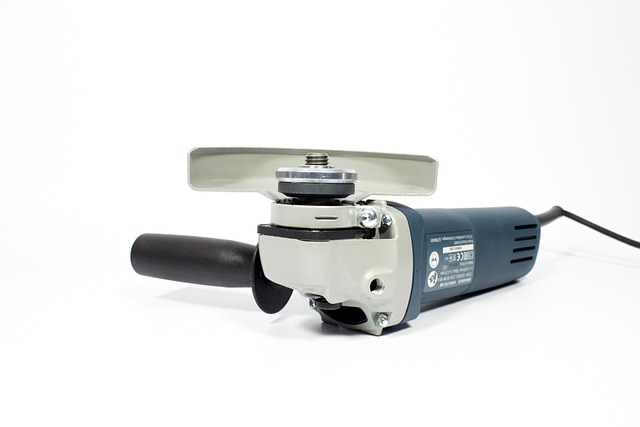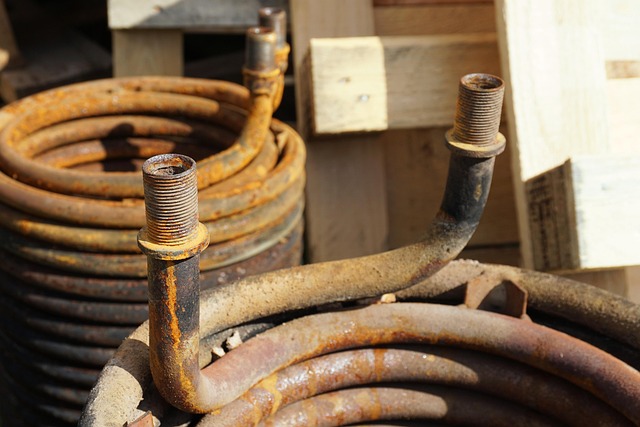Troubleshoot heating zones by identifying faulty thermostats, wiring issues, or sensors. Replace components for precise control and optimal performance. Calibrate thermostats, reset controls, and test zone valves. Check power sources, inspect wiring, and address safety concerns. Adjust zone settings for even warmth distribution. Engage a professional HVAC technician for complex heating controls repair.
Is your home’s heating system acting up, leaving you with uncomfortable zones? Don’t fret! This guide will help you swiftly resolve issues with your heating zones. From identifying basic problems like checking thermostats and wiring, to replacing faulty components, calibrating controls, and inspecting power issues, we’ve got you covered. Learn the importance of proper zone settings and when to seek professional assistance for effective heating controls repair.
- Identify Problem: Check Thermostat and Wiring
- Replace Faulty Components: Thermostats & Sensors
- Calibrate or Reset Heating Controls
- Inspect for Power Issues and Breakdowns
- Adjust Zone Settings: Ensure Correct Configuration
- Seek Professional Assistance: When DIY Fails
Identify Problem: Check Thermostat and Wiring

The first step in resolving heating zones not working issues is to identify the problem. Start by checking the thermostat and wiring. A faulty thermostat can indicate incorrect temperature readings, leading to inefficient heating. Similarly, damaged or loose wiring may disrupt the electrical supply, causing individual heating zones to malfunction.
Inspecting these components is often a quick and straightforward process that can provide immediate insights into the root cause of the issue. If you notice any obvious signs of damage or malfunctioning, such as incorrect temperature settings or exposed wires, it might be time to consider a water heater thermostat replacement or even explore options for a more advanced heat pump installation. For specialized heating controls repair near me, professional services are readily available and can offer long-lasting solutions.
Replace Faulty Components: Thermostats & Sensors

One common cause of heating zones not functioning properly lies in faulty components, particularly thermostats and sensors. When your thermostat isn’t accurately reading your desired temperature or signaling the heating system to activate, it can lead to uneven heating or zones remaining cold. Similarly, defective sensors can prevent hot water or steam from reaching certain areas, leaving them unheated.
Replacing these components is often a straightforward solution to heating controls repair. Modern thermostats offer smart features and precise control, while new sensors ensure efficient heat distribution throughout your space. Whether you’re addressing an issue with a dishwasher’s heating element (a specific type of heating control troubleshooting) or troubleshooting a larger heating control panel repair, identifying and replacing faulty parts is a key step in restoring optimal heating performance across all zones.
Calibrate or Reset Heating Controls

If your home’s heating zones aren’t functioning correctly, one common solution is to calibrate or reset the heating controls. This process involves checking and adjusting the settings on your thermostat to ensure it’s communicating accurately with your HVAC system. Often, a simple power cycle can resolve any glitches or communication issues between the thermostat and the furnace or heat pump.
Start by locating your thermostat battery backup (if equipped) and ensuring it has sufficient power. Then, follow the manufacturer’s instructions for resetting the control. This may involve holding down specific buttons for a few seconds or entering a reset code. After resetting, re-enter your desired temperature settings and check if the heating zones are now responding accordingly. If you’re dealing with persistent `heating control repair` issues, consider consulting a professional HVAC technician who can diagnose more complex problems related to `ac unit heating issues`.
Inspect for Power Issues and Breakdowns

Before diving into complex heating zone troubleshooting, it’s crucial to inspect for any power-related issues or breakdowns. Start by checking circuit breakers and fuses; a tripped breaker or blown fuse could be the culprit behind your heating controls repair woes. Once you’ve reset these safety mechanisms, examine the wiring for signs of damage or loose connections, which might require professional attention. If everything appears in order, move on to testing individual zone valves and thermostats, as a replace broken thermostat or smart thermostat installation could be the solution for why your baseboard heater isn’t functioning properly.
Adjust Zone Settings: Ensure Correct Configuration

Adjusting zone settings is a crucial step in resolving heating issues, especially when dealing with an inefficient distribution of warmth. Each room should have its temperature set according to the desired comfort level and the specific needs of its occupants. Incorrect configurations can lead to zones feeling too warm or too cold, indicating a problem with either the thermostat or the heating system itself. It’s important to remember that different types of heating systems, such as heat pumps or gas boilers, require precise settings for optimal performance. For instance, a heat pump freezing up might be due to incorrect temperature settings or a dirty filter, which can be resolved by following a thorough cleaning routine and adjusting the zone controls accordingly.
To ensure correct configuration, start by checking each thermostat in every zone. Verify that the temperatures are set appropriately for the time of year and adjust as needed. In addition to temperature settings, consider factors like room activity (e.g., occupancy, use of curtains or blinds) and local weather conditions. A well-maintained furnace filter cleaning tips can also contribute to better heating control by allowing air to flow freely throughout the system. By carefully managing these variables, you’ll be on your way to fixing heating zones not working issues quickly and effectively.
Seek Professional Assistance: When DIY Fails

If you’ve exhausted all DIY troubleshooting methods and your heating zones still aren’t functioning properly, it’s time to seek professional assistance. Heating controls repairs can be complex, involving intricate systems that require specialized knowledge and tools. A qualified HVAC technician will be able to identify the root cause of the issue, whether it’s a faulty thermostat, a problem with the heating elements, or an issue with your furnace filter (which should be changed regularly for optimal performance).
Don’t delay in contacting a professional if you suspect a more serious problem like boiler repair or electric boiler maintenance. Ignoring issues can lead to more severe and costly damage down the line. Prompt action ensures that your home remains comfortable, safe, and energy-efficient all year round.
Resolving heating zone issues doesn’t have to be a complex, time-consuming process. By systematically checking and replacing components like thermostats and sensors, calibrating or resetting controls, and ensuring proper power supply and zone settings, you can quickly get your system back up and running smoothly. If DIY troubleshooting doesn’t resolve the problem, don’t hesitate to seek professional assistance for effective heating controls repair.
